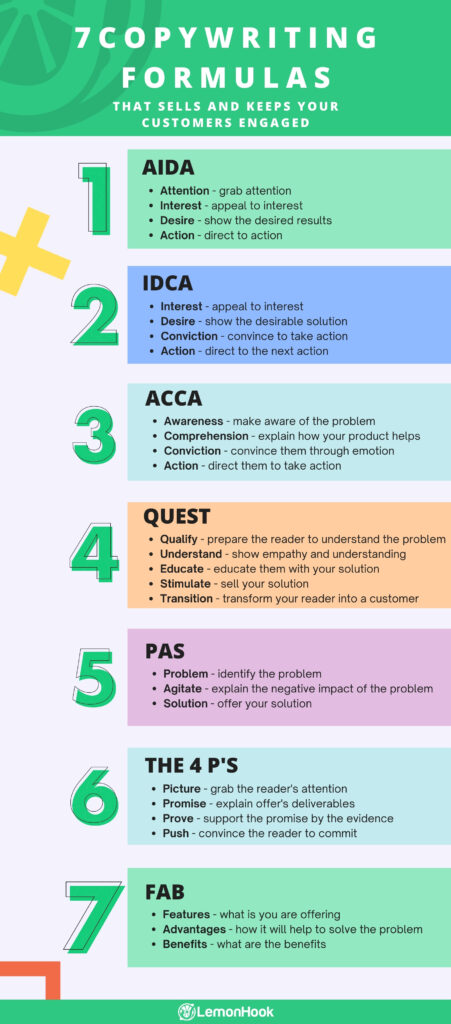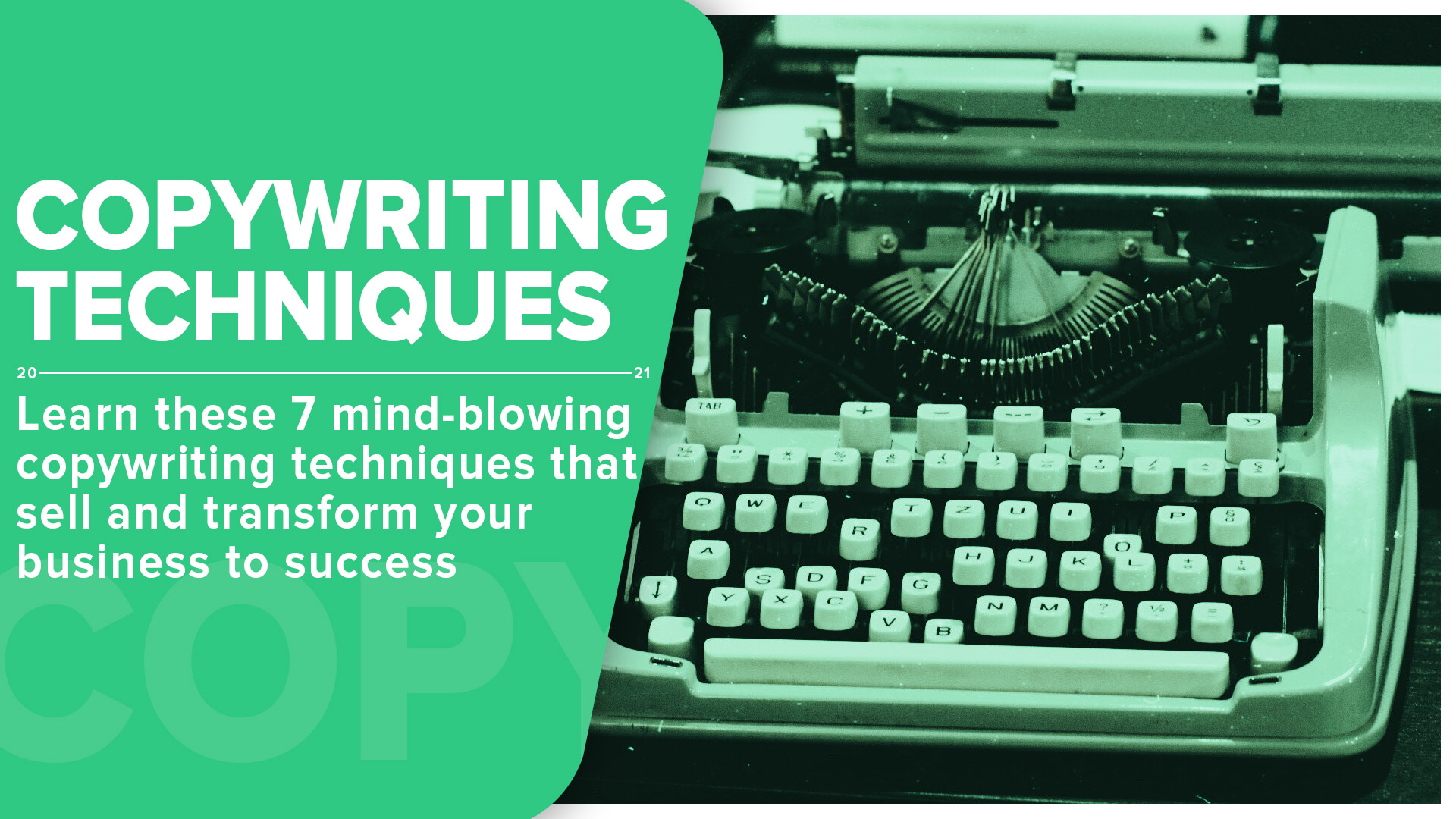
Do you remember the last time you read something online and shortly after without even noticing you’re already placing their products inside a shopping cart? Or the last time you read the blog post that was so captivating that you just lost the time track?
That’s the power of great copywriting and despite today’s technology advancements and latest AI tools such as GPT-3 that can write texts almost without people’s input. Great copywriting skills will remain high in demand and no technology advancements will completely replace the connection writers create with their readers.
To say the least great copywriting skills are high in demand and every business can benefit from good writers. Creating immersive stories that sell can be beneficial, from small, local businesses to Fortune 500 corporations.
And looking at the advertising history great copies brought more traffic, leads and generated more sales than the average ones.
Therefore, in today’s article, we’ll cover the copywriting basics and why great copy is important to your business. We’ll share 10 elements that make a great copy and what are the top 7 techniques you can use to speed up the writing process. There was a reason, one famous writer said, “Copy is not written. Copy is assembled. You don’t write copy, you assemble it.”
Lastly, stick till the end of the article, and find out what we’ve left for you at the Bonus section this time!
Copywriting Basics
What is copywriting?
Copywriting is the art of writing text to persuade customers to make a purchase or execute any other beneficial action on your site. It can be sign-up to a newsletter, apply for a discount promotion, or book a consultation call.
Great copy is usually more than a wall of text and it can be used across other marketing materials. For instance, brochures, whitepapers, transcripts, and social media posts. More than anything else great copy connects all these materials together to a single system. As the result building a brand image that conveys its values through text.
Above all, great copy tells a compelling story and creates an emotional connection with your brand that triggers the decision-making process. It’s said that great copywriting doesn’t sell products and it’s meant to sell emotions and lifestyles.
Copywriting Benefits to Business
In today’s digital age, when most of the online content is in the video you might say that copywriting is irrelevant. But let me prove you wrong.
Just think for a second that great writing skills could be used more than writing sales copies. It can be used to:
- Write Youtube video script
- Craft compelling email outreach
- Create catchy blog post headlines
- Write engaging content on social media
- Create immersive podcast descriptions
In addition, these are the benefits that great copy brings to your business:
- Increases website traffic
- Improves conversion rates
- Generates more sales
- The content becomes more sharable
- The offer becomes more understandable
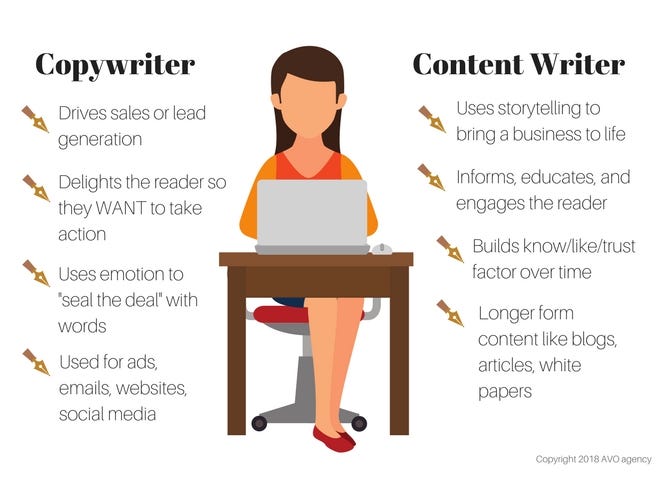
10 Elements that Great Copy Has
To begin with, if you aren’t an experienced writer it’s not easy to see the difference between great and average copy. Though there’re several elements that each great copy has in common that can help you to improve your own writing skill. As the result, you’ll be able to write copies that sell and generates leads to your site.
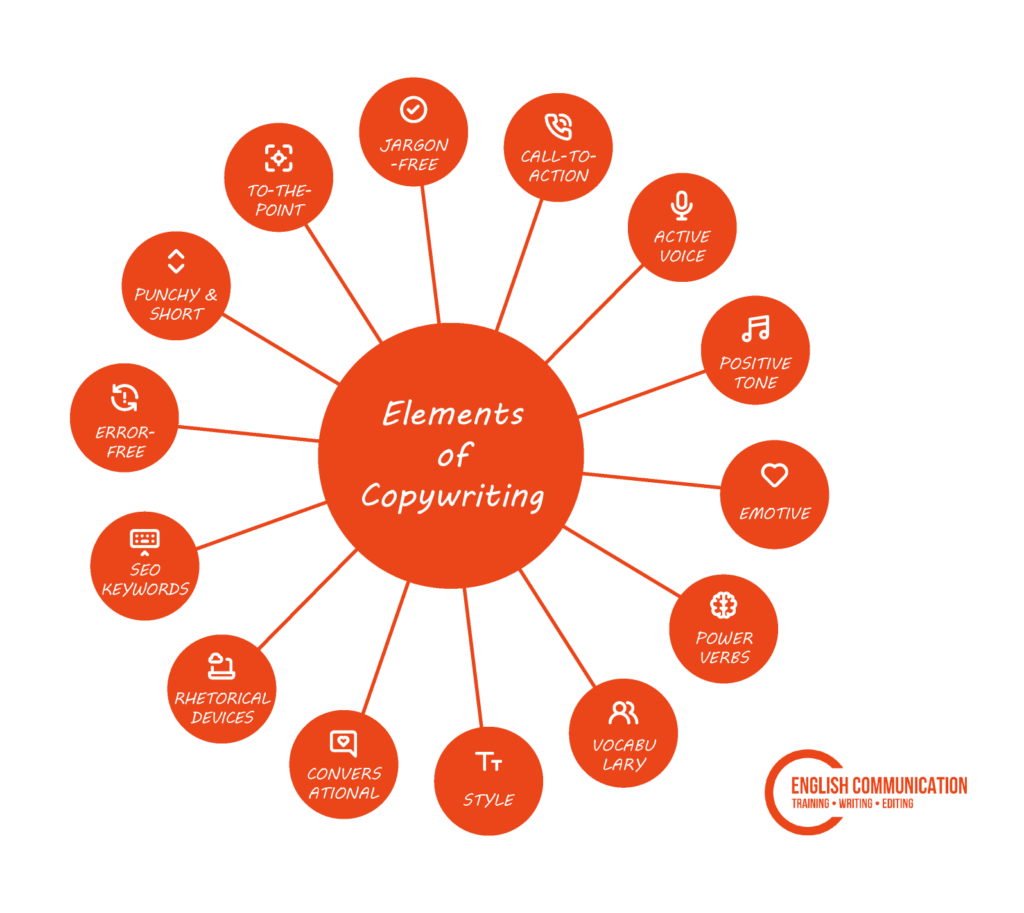
(14 Elements of copywriting | English Communication)
1. Grammatically Correct
One of the most important elements that each great copy has, is that they’re grammatically correct. No spelling issues, punctuation errors, the syntax is correct and has good overall text flow.
On the other hand, if you wrote a blog post over 3,000 words, it’s okay to have one or two grammar errors. However, it’s unforgiving to have even a single error on your front page sales copy. I bet that you remember at least once when you read something not so well-written and each grammar error was ruining the experience. Even worse, damaging the brand’s image.
Therefore, don’t ignore this step and get yourself a tool, such as Grammarly, that will help you to make your copy grammar-free. Double-check it twice before going live, or give someone else to proofread it and eliminate all the grammar errors they can find.
2. Strong Call-to-Actions (CTA)
These days it’s not enough to write grammar-free content if you want to stay competitive and generate leads.
It’s important to have strong call-to-actions on your website that provide a clear direction on what your customers need to do next.
If your business sells products, make sure to propose your deal before they leave the site. On the other hand, if you’re raising brand awareness connect with your audience on the different channels or ask them to subscribe to your lists. The worst thing you can do is leave them wondering without having a clear direction what the next steps they need to take.
3. Strong Emotion
Every business goal should be to build a strong emotional connection with their audience. And one of the ways you can achieve this is through persuasive copy.
And of course, it’s much easier to say that than to do it. However, every brand should strive to create strong emotions with their customers. Use your copy to explain why they need your product, how it will benefit them and why it’s better than your competition.
In the end, you’re not just selling diamond rings, you’re selling luxury. You’re not selling insurance, you’re selling protection. And you’re not another travel agency, but you’re selling experiences and memories.
Therefore, identify the emotions your brand wants to match and how do you want your brand image to be that your future customers will remember you for.
4. Jargon-Free
When you write your copy avoid any specific industry jargon at any cost. Are you’re a software developer, try to explain difficult cloud-computing concepts in terms that a random person from the street could understand. If you’re a doctor, don’t make medicine concepts even more complicated and explain the difficult terminology as easily as possible.
As the result, you’ve might already hear of the Flesch text readability test that measures text readability by the average sentences length and amount of syllables per word. The following test states that each copy should be between 60-70 results and it’s considered good readability. On the other hand, this means that a good web copy should be easily understood by a fifth-grader or 13-15 years old kid.
5. Optimized for SEO
Every business goal should be to rank their content as high as possible in SERPs (Search engine page results). As the result, keywords optimization in your content can’t be ignored, and it can help your business claim better positions in search engines.
Identify the keywords your business wants to rank for in the long-term, consistently and naturally implement them to your website. You can learn more about optimizing your website’s SEO in our latest keyword research for content SEO blog post.
However, don’t forget that keywords optimization is just one of many factors that search engines use to rank your content online. And stuffing keywords everywhere in your text can hurt the overall reading experience and lower overall content quality.
6. Short and Direct
Great copy should be short and direct. Try to convey your message within few lines and use as least as possible “filler” and other “fluff” words.
Learn how to write a direct and short text that doesn’t drag your readers to irrelevant topics. In addition, long text walls can be damaging to your reading experience. It lowers your CTA’s impact and buries them in the long walls of text.
7. Writing Style
Another important point in writing great copy is to choose the right style that suits your audience the best. Depending on your audience, your writing style can be somewhere between formal and academic or written in a more regular conversational style.
Think more like this. If you’re writing to a teenagers group between 13-15 years old, avoid complicated and academic terms. On the other hand, if you write a research paper for your peers, you might want to include more academic terms.
8. Specific Channel
Many marketers say that there’s a lot in common between different media channels and you should repurpose your content. However, be careful here and don’t just blindly copy, paste your text to a different channel because you will need to do some manual labor to match the channel’s specifics.
Just think for a second, that it would be quite stupid to copy your blog post and use it as a transcript for your Youtube video without any edit. Remember, that each channel has its own content rules. It can be different content styles, lengths, tones, delivery, and format.
Lastly, think of which part of your customer’s journey you’re targeting, and further you go down the funnel the copy tends to get longer. For instance, the text length on the front page might be shorter than the ones explaining your product on the store page.
9. Active Voice
Generally speaking, great copies use an active voice that creates a sense of urgency, accessibility, directness, and personalization.
Writing in an active voice is beneficial, because it reaches your audience, and connects with them in a more personal way. However, using an active voice doesn’t all the time, and writing technical papers or industry reports you should use a passive tone.
Lastly, using active voice in the sales copies is a trending topic right now. However, don’t get fooled here, and before writing branded copy double-check the company’s style guide.
10. Know your Audience
It’s important that every business knows their audience well and at customer’s journey part they’re right now.
A person who just visited your front page needs to be approached differently than the one who’s been on your lists for more than 2 years.
Where the new visitor might not yet know that much about your brand and the products you sell. On the other hand, you don’t want to be too repetitive and annoying to your subscribers and keep repeating the same thing over and over again. As the result, you might lose their interest in your brand, or even worse, they will leave your list.
As the result, create copy that’s compelling to your target audience, and don’t try to target everyone, because you can’t be good to everyone.
7 Copywriting Techniques
Without a doubt, you can start writing your text from a blank page and that’s how many people do. Though, why should you make your writing difficult when you can enjoy it more, work smarter, faster, and have more fun along the way using tested copywriting techniques.
(7 Copywriting techniques | LemonHook Blog)
1. AIDA
The AIDA is a powerful copywriting technique that works well on sales pages, blog posts intros, emails newsletters, and video scripts.
It stands for:
-
Attention
-
Interest
-
Desire
-
Action
Grab the reader’s attention within the first lines of your copy, create interest with a bold promise. Then transform the vision within customers’ imagination using a desire and how they’ll grow. And close it with a clear call-to-action and what they need to do next to achieve all this.
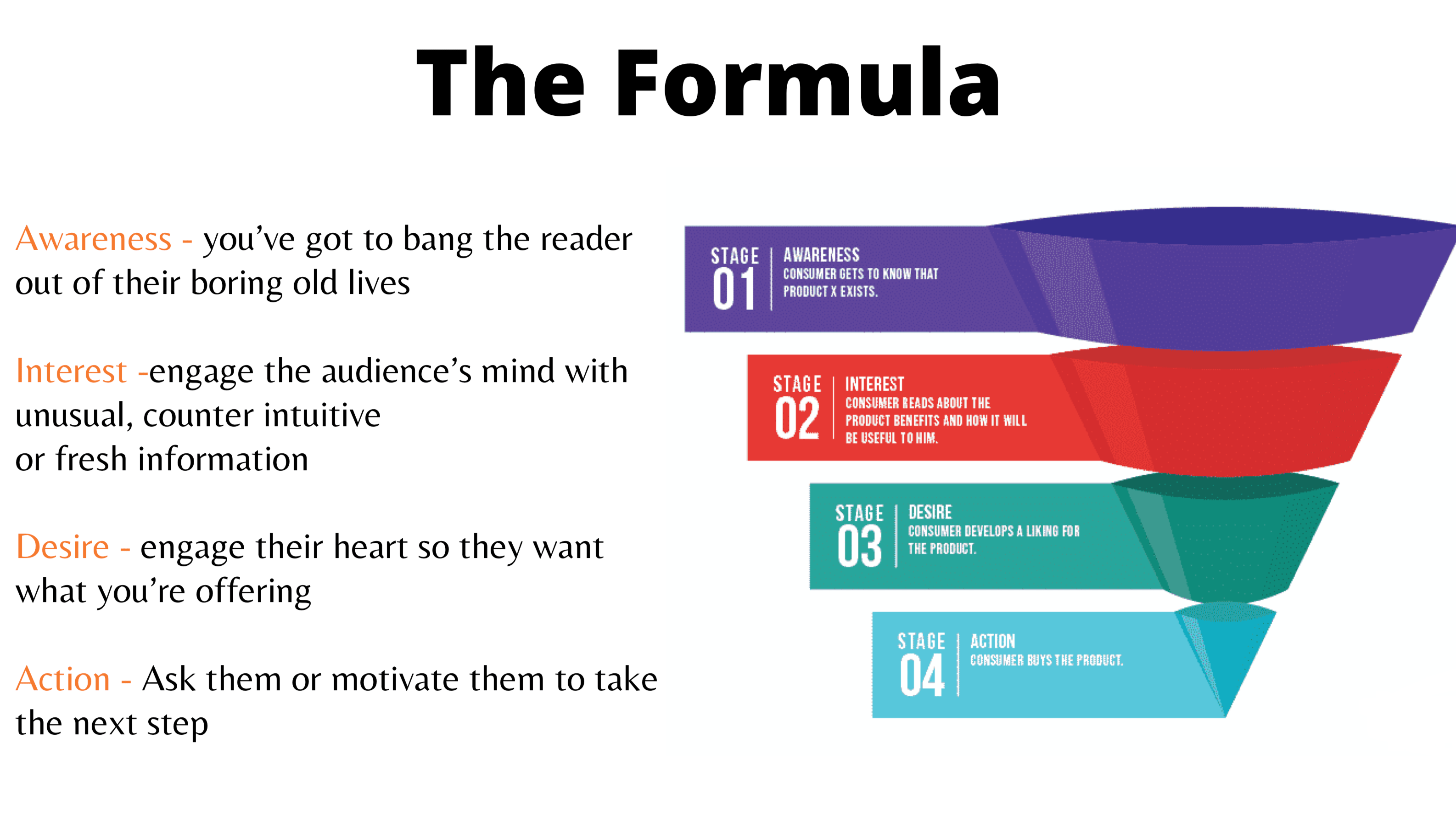
(AIDA copywriting technique| BBN Times Blog)
2. IDCA
The IDCA formula grabs the reader’s attention and adds a conviction between the desire and action before asking for a sale. This copywriting technique is great for “why-posts” that provide readers with a reason why they should buy your products.
It stands for:
-
Interest
-
Desire
-
Conviction
-
Action
Create interest and appeal to your readers, showing them the desired result and the transformation they will achieve. Re-assure them using the convection technique and prove to them that they need your product. Lastly, close your copy with a direct call-to-action and what to do next.
3. ACCA
The following formula is a variation of the previously mentioned AIDA, though it focuses more on clarity and understanding. Therefore, if you want to create a more educational and emphatic connection with your audience that builds momentum use the following technique.
Because it’s more focused on creating educational and empathetic content, it’s great to use it in how-to posts and more complicated topics such as strategy creation.
ACCA stands for:
-
Awareness
-
Comprehension
-
Conviction
-
Action
First, make your reader aware of their problem. Once he understands it, explain how it affects his business and how your product can solve it. Re-assure that only your product can help him and close the deal with a clear action on what to do next. Signup for a consultation call or get a demo product and try it yourself.
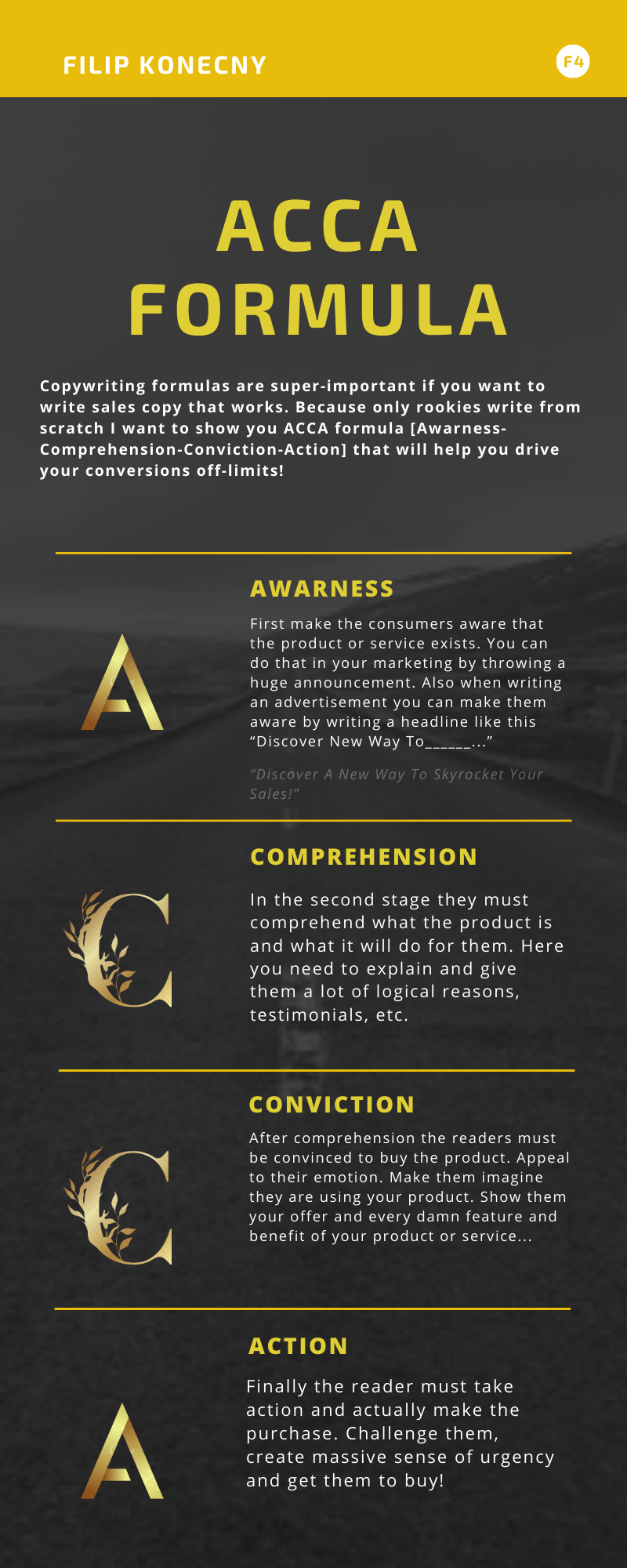
(ACCA copywriting formula | Filip Konecny Blog)
4. QUEST
QUEST is quite a popular copywriting technique that explains new concepts and prepare your readers for the next actions. It’s great in “what” posts, guides, and articles explaining the concepts of how to do something. As the result, you can use it at pretty much any introduction content on your site.
It stands for:
-
Qualify
-
Understand
-
Educate
-
Stimulate
-
Transition
Firstly, prepare your readers for what they’re going to learn. Show empathy and that you truly understand their problem and what they’re experiencing. Once you do that, it’s time to educate them, propose your solution, and explain how your product will help. Stimulate a bit more and give more arguments that will help them make the final decision. Lastly, turn your prospect into a customer.
5. PAS
In many cases, the PAS formula works the best while presenting a solution to a known problem. For example, writing a blog post on how businesses will have to adapt to post-Covid economics and change their business model.
Popular content formats include blog posts, articles, and in-depth whitepapers.
PAS formula stands for:
-
Problem
-
Agitate
-
Solution
First, make your reader aware of the problem and explain how it negatively affects his business. Then create an assuring solution that encourages him to take action and show the direction to go next.
6. The 4 P’s
The 4 P’s is a unique formula that takes a different approach than many other techniques to generate conversions. This copywriting technique gets the readers to commit to your solution by delivering them a promise.
4 P’s stands for:
-
Picture
-
Promise
-
Prove
-
Push
First, grab the reader’s attention by painting a picture of how your product can help them. Follow by explaining how it’ll deliver and guarantee the desired results. Then use evidence and tested results to support the promise and convince the reader to take the next action and commit to a deal.

(4P’s copywriting formula| Filip Konecny Blog)
7. FAB Formula
Lastly, the following formula is the most basic one you can use. In short, next to highlighting the product’s features you need to show results and how your readers will benefit from them.
This technique is perfect for products and services copies aimed to generate as many sales as possible.
FAB formula stands for:
-
Features
-
Advantages
-
Benefits
First, state what is your offer and how your reader will benefit. Then, tell how it will help them and improve their lives. Lastly, explain what benefits they will get.
Bonus Point
Good vs. Bad Copies
After learning copywriting basics, what elements make great copies, and what techniques to use to speed up the process, there’s only one thing that has to be discussed. Therefore in today’s bonus part, we’ll cover good and bad ad copy examples, and what we can learn.
Good Ones
1. The Ski Resort’s One-Star Review Ad Campaign
One of the most powerful marketing techniques is to listen to your audience’s needs and accept their critics. That will help you to improve your product over time. That’s exactly what Snowbird Ski Resort did during the past several years and used negative reviews in advertising to their advantage.
This way showing that no one is perfect and it’s important to reflect on every feedback your business gets.
Lesson: brands that accept critics are seen as more transparent and reliable by their communities. Therefore don’t be afraid to use negative reviews to your advantage in marketing campaigns.
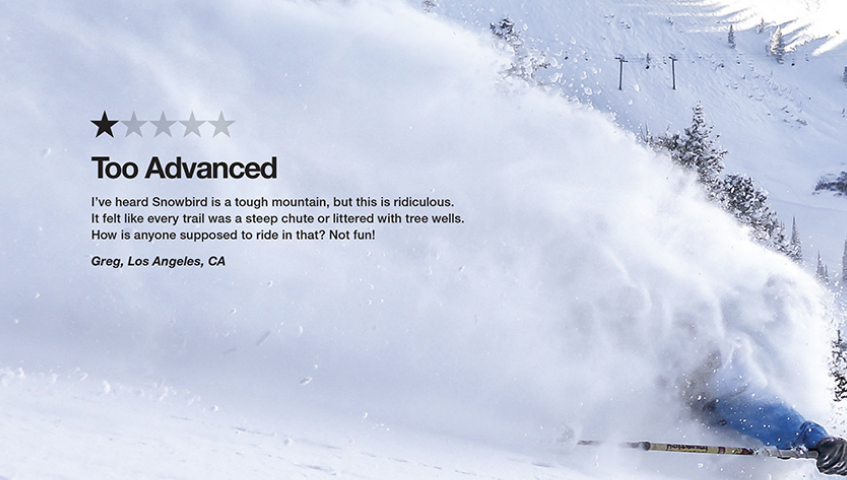
2. Rolls-Royce Ad Campaign from 1958 Print
Despite its old age and campaign being launched back in 1958 by Mr.Ogilvy himself, this ad is a timeless classic that can’t be ignored. And there’s so much we could learn from it!
Mr.Ogilvy spend three weeks researching the new Rolls-Royce Silver model looking for a single feature that he can use to position the Rolls-Royce model against the competition. After long sleepless nights, the following campaign was developed that hit markets with thunder and generated massive buzz. That’s how the famous headline “At 60 miles an hour…” was born that it’s continuously mentioned in today’s modern day’s advertising.
“At 60 miles an hour, the loudest noise in this new Rolls-Royce comes from the electric clock”
Lesson: Have enough patience to research your product as much as you need. Find a single feature that will help you to sell your product and position it well against your competition.
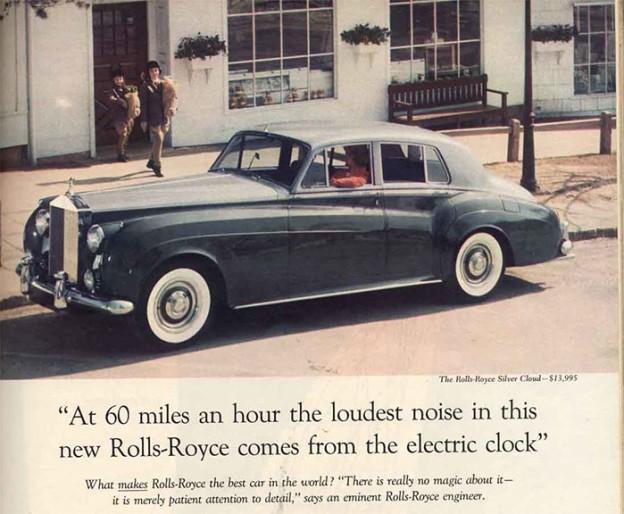
Bad Ones
Now it’s time to discuss several campaigns that didn’t perform that well and should be avoided as the reference.
3. Bergemann Sohn Funeral Home Ad
Many brands strive to be unique and stand out from their competition. That’s why many of them chose to be rebellious and somewhat controversial.
Though there’s a thin line here and once you go this direction too far, you can easily fail. Analyze the billboard ad from the funeral home Bergemann Sohn placed right in the center of Berlin’s subway. The billboard states “Come a little closer” and it’s placed on the opposite side of a metro station.
That’s a bad advertisement example because it’s too controversial and underplays the life event of death. It also tries to satirize the fact of suicide, which shouldn’t be joked about.
Lesson: it’s okay to go slightly controversial to stand out, though be very careful and don’t go cross the line.

4. Sheet Energy Strips Campaign
Similar to being controversial, using humor in your ad copies is a slippery slope to go for several reasons.
First of all, everyone has a different taste for humor, and what some people might find funny, others might find it offensive.
Second, humor can be perceived differently in different cultures. For example, the Chinese don’t see humor as an essential element of creativity that helps fight against negativity and relief stress as Westerners think of. Therefore in China, you should be avoiding humor in ad campaigns as much as possible.
However, even in Western cultures going too far with your jokes can go wrong and be damaging to your brand. I don’t know what the copywriters at Sheet Energy Strips did think while developing these campaigns, but I’m sure that they went too far. As the result, rather than being funny campaigns, they’ve ended up being disgusting and damaged their brand reputation.
There’s a reason why Rosser Reeves said “Nobody ever bought anything from a clown”.
Lesson: Use humor subtly in your ad copies and only if it’s needed. On the other hand, leave your dirty jokes out.

Conclusion
All in all, copywriting is a very powerful art form in today’s advertising that can increase your sales and keep your customers engaged. And nobody was born with amazing writing skills, and to become better in this it takes years of practice and practice.
However, there are some shortcuts you can take to make the journey more fun. Knowing what elements make great copies can help you to better understand their structure.
These are the elements of every great copy:
- Grammatically correct
- Have strong CTA’s
- Build for emotional connection
- Is jargon-free
- Optimized for SEO
- Short and direct
- Has a good writing style
- Written for a specific channel
- Use active voice
- The target audience is clear
In addition, if you’re having trouble writing from a blank page you can always use time-tested copywriting techniques. As one of the famous copywriter’s said “Copy is assembled, you don’t write a copy, you assemble it.”
Use the following 7 copywriting techniques to enhance your style:
- AIDA (Attention, Interest, Desire, Action)
- IDCA (Interest, Desire, Conviction, Action)
- ACCA (Awareness, Comprehension, Conviction, Action)
- QUEST (Qualify, Understand, Educate, Stimulate, Transition)
- PAS (Problem, Agitate, Solution)
- The 4 P’s (Picture, Promise, Prove, Push)
- FAB (Features, Advantages, Benefits)
Lastly, to become a better copywriter look at masterful advertising classics and understand that even a negative review can work.
On the other hand, be aware of bad copy examples and what you should avoid. Don’t be too controversial and use humor only subtly.
If you think that’s not enough and want to learn more about copywriting from Mr. Ogilvy himself, I would highly recommend checking this advertising masterpiece “Ogilvy on Advertising”. That will teach you the difference between good and great copy and how to craft a copy that sells. The book is full of visual examples from the mid-nighties that explain how to craft ads, prove the importance of strong headlines, and give the example of the most popular ad layouts that haven’t changed until these days.

